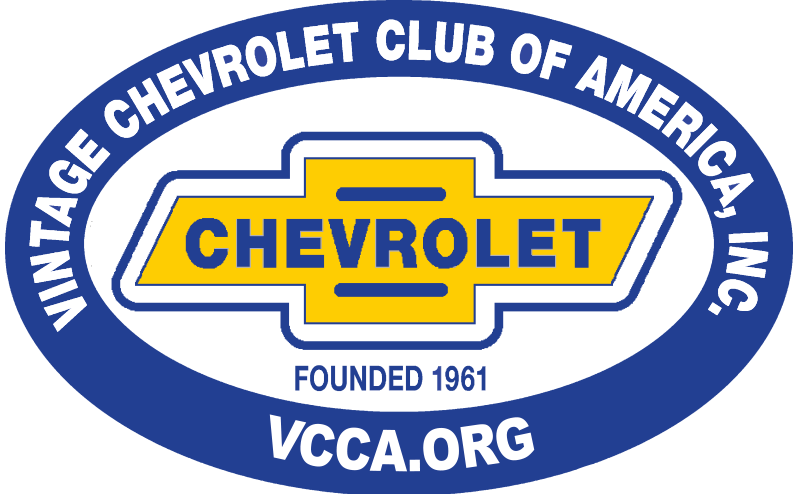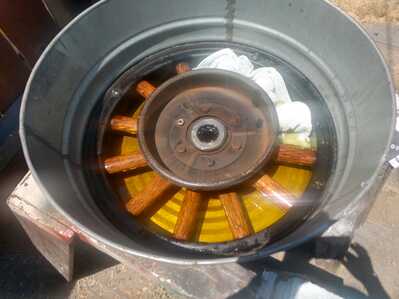Recently, I took my '28 AB Canopy Express (Justin) to a car show at the Veteran's Memorial hall in Santa Rosa, CA. It was a nice day and we took home the People's Choice award! 😉
After the show, while strapping Justin onto my trailer, I thought the front left wheel felt a little loose. Not good. Well it's been 12 years since I gave the wheels a bath in Boiled Linseed Oil, so it's time to take the wheels off, check for looseness, and give the hickory spokes another drink of oil.
It's important to keep the spokes swollen and flexible. If they dry out, they get loose in the felloe, get brittle, and could break when going around a turn, so it's time to get to work.
I jacked up the truck and put car dollies under the axles, so I could move the truck side to side in my carport to get the wheels off. I first took off the outer rim, checked the looseness of the wheel, and then took the wheel off the truck. I worked on them one at a time and when the first wheel started soaking in oil, I started working on the second wheel. See the first photo where I'm using my 'little' Crescent wrench to take off the hub cap. It's only 24 inches long. 😉
After taking the outer rim off the wheel (the tire stays on this outer rim), you can see how the spokes are attached to the felloe (inner rim that's attached to the hub).
Before I started soaking the wheel in oil, I decided to scrape most of the old finish off the spokes. I did this by hand with a variety of scrap pieces of steel (sharpened on one edge) and paint scraper tools. The end results was wonderful, but the process was tedious. It took me a total of 16 hours to scrape the front and back of all 48 spokes. I worked on one wheel at a time, got it into the oil bath, and while it soaked for 2 days, I moved on to scraping the next wheel. The following photo is a good view of some spokes before and after scraping.
As it turns out, the left front wheel was not loose, but the left rear wheel was. I'm glad I took the time to do all this work. The nuts on the hub carriage bolts were loose and a few were actually stripped. I gently cleaned up the bolt threads using a 3/8-16 die and replaced all the nuts. The replacement nuts are thicker, so they can grab more threads than the original nuts. I also found a couple of stripped nuts on the rim keeper bolts, so those nuts got replaced too.
When I put the replacement nuts on, I put a drop of Locktite 680 on the threads to help prevent them from getting loose in the future.
In the next photo, you'll see one wheel that has scraped spokes (on the left) and one wheel with un-scraped spokes (on the right). Notice that the hub on the left wheel has aluminum foil on the end of the hub. This was my attempt to keep the Linseed oil out of the hub threads and out of the inside hole of the hub. Sigh, it didn't work.
The next photo shows the galvanized steel tub that I used as a soaking tub for each wheel. My Rube Goldberg genes kicked in with this tub. I installed a sink drain in the center for the hub to fit into and drilled holes for the four rim bolts around the edge. I lined the outside holes with three-inch lengths of 1/2" conduit and sealed the ends with JB Weld. I also sealed the sink drain and a seam in the tub with JB Weld.
The good news is that the JB Weld did not leak. The bad news is that the four holes for the rim keeper bolts were not exactly in the correct place, so the wheel did not lay down in the bottom of the tub as I hoped it would. Oh well, the best laid plans, etc..
I put each wheel in the tub upside down so the brake drum would not be in the oil. I poured in a 50/50 mixture of Boiled Linseed Oil and Mineral Spirits into the tub with enough to come up to the spokes. From what I've heard, mineral spirits help the oil soak into the wood.
To keep the spokes wet during the two day soak time, I purchased a bunch of cheap wash cloths to cover the spokes. The idea is that the oil will wick from the bottom of the tub to go over all the spokes. Two or three times per day, I used a paint brush to wet the wash cloths. I also kept the tub covered with a flattened cardboard box to keep the sun off the tub while the soaking was going on.
When a wheel came out of the tub, I wiped it down with a dry wash cloth and set it up to dry in the sun for a few hours before putting it back on the truck. The next photo shows a finished wheel ready to go back into service.
Check back here in 10 years when I'll go through this again. I'll keep you posted if anything goes awry.
Cheers, Dean
Dean "Rustoholic" Meltz
San Leandro, CA
3511 posts on vccachat.org
Lurch -1927 LM one ton truck - tinyurl.com/Lurch-VCCACHAT-Gallery
Justin - 1928 AB Canopy Express (1/2 ton truck) - tinyurl.com/Justin-Stovebolt-Gallery
Thanks so much for posting this. Makes one stop and think and used methods I had not thought of.........Joe....
SANDERSON
Hannon, Ontario
Excellent! 🙂
I know linseed oil is horribly expensive now, but I would have been tempted to try to submerge the spokes completely.
But, obviously what you did worked very well! 👍
I do hope those used rags are in a steel can out in the yard somewhere though.
Linseed oil, and especially boiled linseed oil, on used rags is notorious for spontaneously combusting in a surprisingly short period of time.
One of our neighbors nearly burned his house down the very night after he used linseed oil to wipe down some cabinets in his house.
Love the look of those wheels!
Ole S Olson
Saskatoon, Sask, Canada
1946 DR 3/4 ton stake
1139 old site posts
What a great write-up. Thanks Dean. By the way, I have a "micro" Crescent wrench too. 😀
7046 old site posts
Save a life, adopt a senior shelter pet
1938 Master Business Coupe
1953 210 Sedan
Thanks for the kind words, guys.
I used a minimum amount of the oil/spirits mix so I wouldn't have much left over at the end.
Wearing Nitrile gloves, I wrung the wash cloths out, letting the oil drip onto and soak into the naked boards on my flatbed trailer. I also 'painted' the leftover oil mix from the galvanized tub onto the trailer boards.
The wrung-out wash cloths were laid out on the ground (separately, not in a pile) until the next garbage pickup. On that day, I put them into the outside garbage bin and they went bye-bye.
BTW, the spruced up spokes now nicely compliment the natural wood finish of the roof's underside. See the attached pic of the roof's underside.
Cheers, Dean
Dean "Rustoholic" Meltz
San Leandro, CA
3511 posts on vccachat.org
Lurch -1927 LM one ton truck - tinyurl.com/Lurch-VCCACHAT-Gallery
Justin - 1928 AB Canopy Express (1/2 ton truck) - tinyurl.com/Justin-Stovebolt-Gallery



